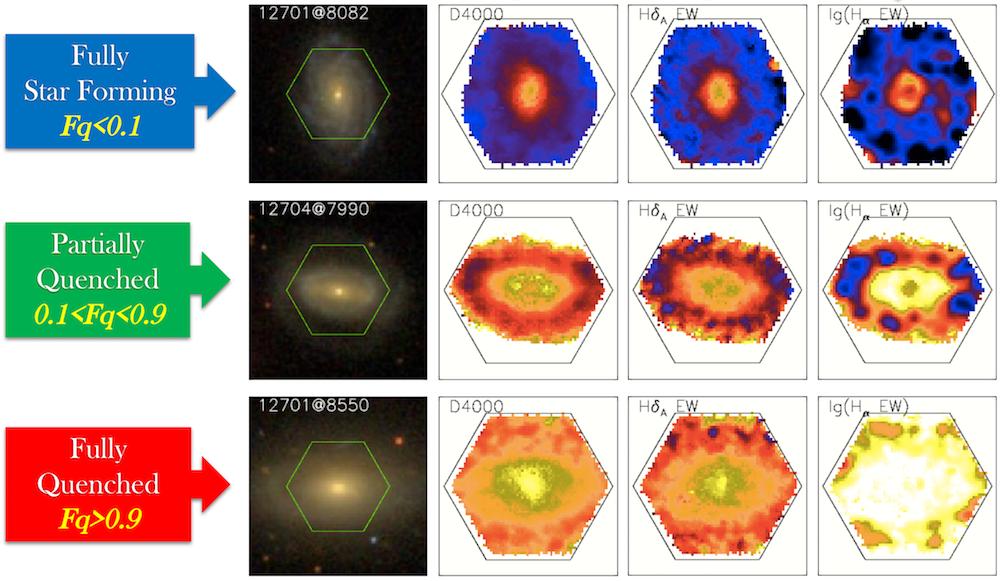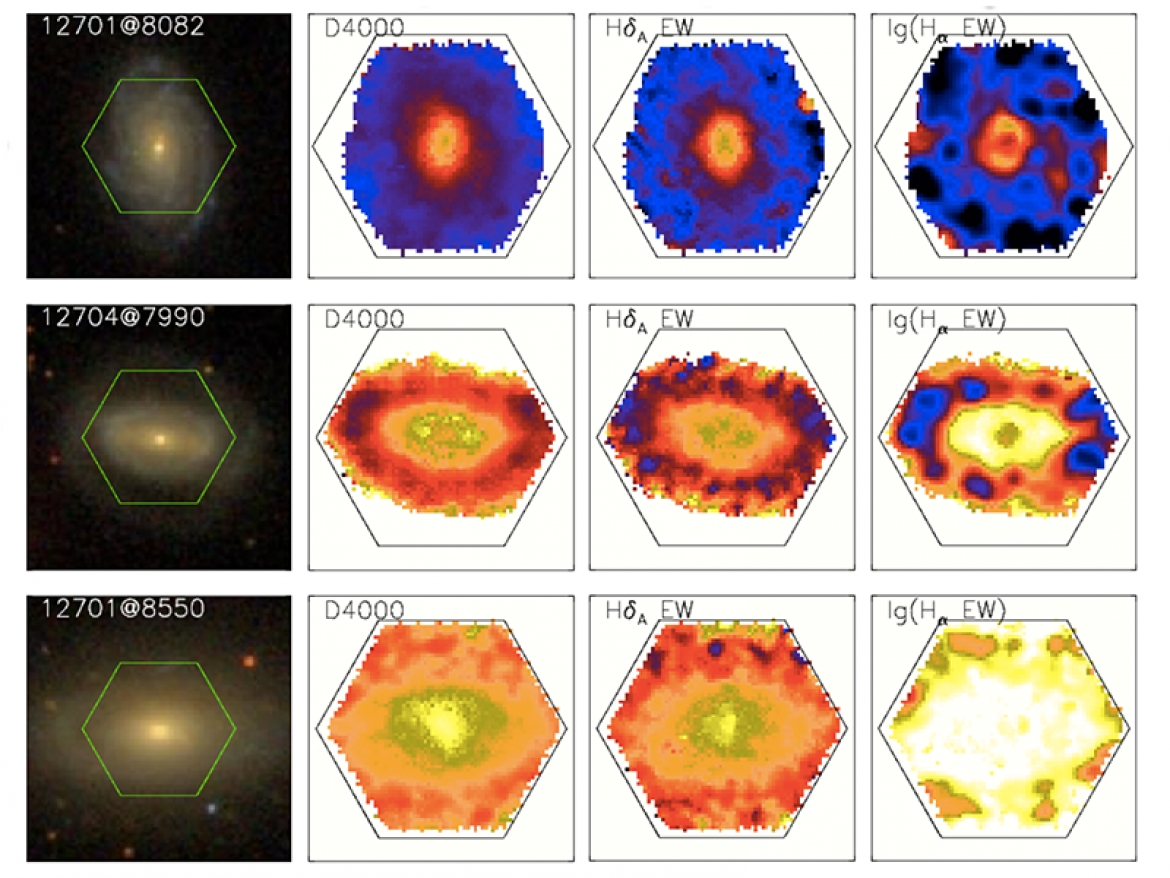MaNGA reveals how galaxies stop forming stars
Our understanding of the galaxy populations at both low-z and high-z has advanced dramatically, thanks to the large photometric/spectroscopic surveys of galaxies accomplished in the past one and a half decades. It's well established that the galaxies can be divided into two major populations in the space of stellar mass (or luminosity) and color. In addition, the fraction of the red population has steadily increased by a factor of two since redshift of unity, indicating that the star formation cessation in galaxies has been an important process driving the galaxy evolution in the past ~80 Gyr. However, how the star formation gets shutdown and what processes drive the star formation cessation are not fully understood. Processes internal to individual galaxies (e.g. secular evolution driven by bars or minor mergers, AGN feedback, etc.) and external environmental effects (e.g. tidal stripping and ram-pressure stripping) are both believed to play important roles. Therefore, in order to have a complete picture of the star formation cessation, one would need to have deep imaging and spatially resolved spectroscopy for a large sample of galaxies covering wide ranges of galaxy properties and environment. Such samples have become available only recently from the integral field spectroscopy (IFS) surveys.

As one of the three major experiments of the fourth generation Sloan Digital Sky Survey (SDSS-IV; http://sdss.org), the MaNGA survey (Mapping Nearby Galaxies at Apache Point Observatory; Bundy et al. 2015) is obtaining IFS data for 10,000 galaxies in the nearby universe, selected from the SDSS single-fiber spectroscopic sample. The MaNGA sample spans a wide dynamic range in stellar mass, color, star formation rate and environment. More importantly, MaNGA has effective etendue in the near UV, allowing precise measurements of spectral indices such as the 4000A break (D4000) and the equivalent width of H_delta absorption line EW(Hd_A), indicative of young stellar populations formed in the past 0.1-1 Gyr. These stellar indices, together with the H_alpha emission line equivalent width EW(Ha), provide powerful diagnostics of the recent star formation history (SFH) of given galactic region. MaNGA thus has unique statistical power in studying star formation cessation in galaxies, and a comprehensive picture of the star formation cessation process may be built up by measuring gradients in these diagnostics for the large sample of galaxies from MaNGA.

A team of astronomers led by Prof. Cheng Li from THCA at Tsinghua University, including Dr. Enci Wang from University of Science and Technology of China and collaborators from Shanghai Astronomical Observatory and the MaNGA team, have studied the two-dimensional distributions of the recent SFH for ~2000 galaxies from the current MaNGA sample. They find the majority of the spaxels in these galaxies are consistent with models with continuously declining star formation rate, indicating that starbursts occur rarely in local galaxies. They classify the galaxies into three classes: fully star-forming (SF), partly quenched (PQ) and totally quenched (TQ), according to the fraction of quenched area within 1.5 times the effective radius, f_Q(1.5R_e), finding that galaxies less massive than ~10^10 M_sun present at most weak radial gradients in all the diagnostic parameters. In contrast, galaxies with stellar mass above ~10^10 M_sun present significant gradients in all the three diagnostic parameters if classified as SF or PQ, but show weak gradients if in the TQ class. This implies the existence of a critical stellar mass, at ~10^10 M_sun, above which the star formation in a galaxy gets shutdown from the inside out. Galaxies tend to evolve synchronously from inner to outer regions before their mass reaches the critical value. They have further divided the sample at fixed mass by both bulge-to-total luminosity ratio and morphological type, finding that the conclusions hold regardless of these factors: it appears that the presence of a central dense object is not a driving parameter, but rather a byproduct of the star formation cessation process.

Link to relevant publications:
* Enci Wang, Cheng Li, Ting Xiao, et al., 2017, ApJ submitted, https://arxiv.org/abs/1710.07569
* Cheng Li, Enci Wang, Lin Lin, et al., 2015, ApJ, https://arxiv.org/abs/1502.07040
* Bundy et al., 2015, ApJ, Overview of the MaNGA project, http://arxiv.org/abs/1412.1482



